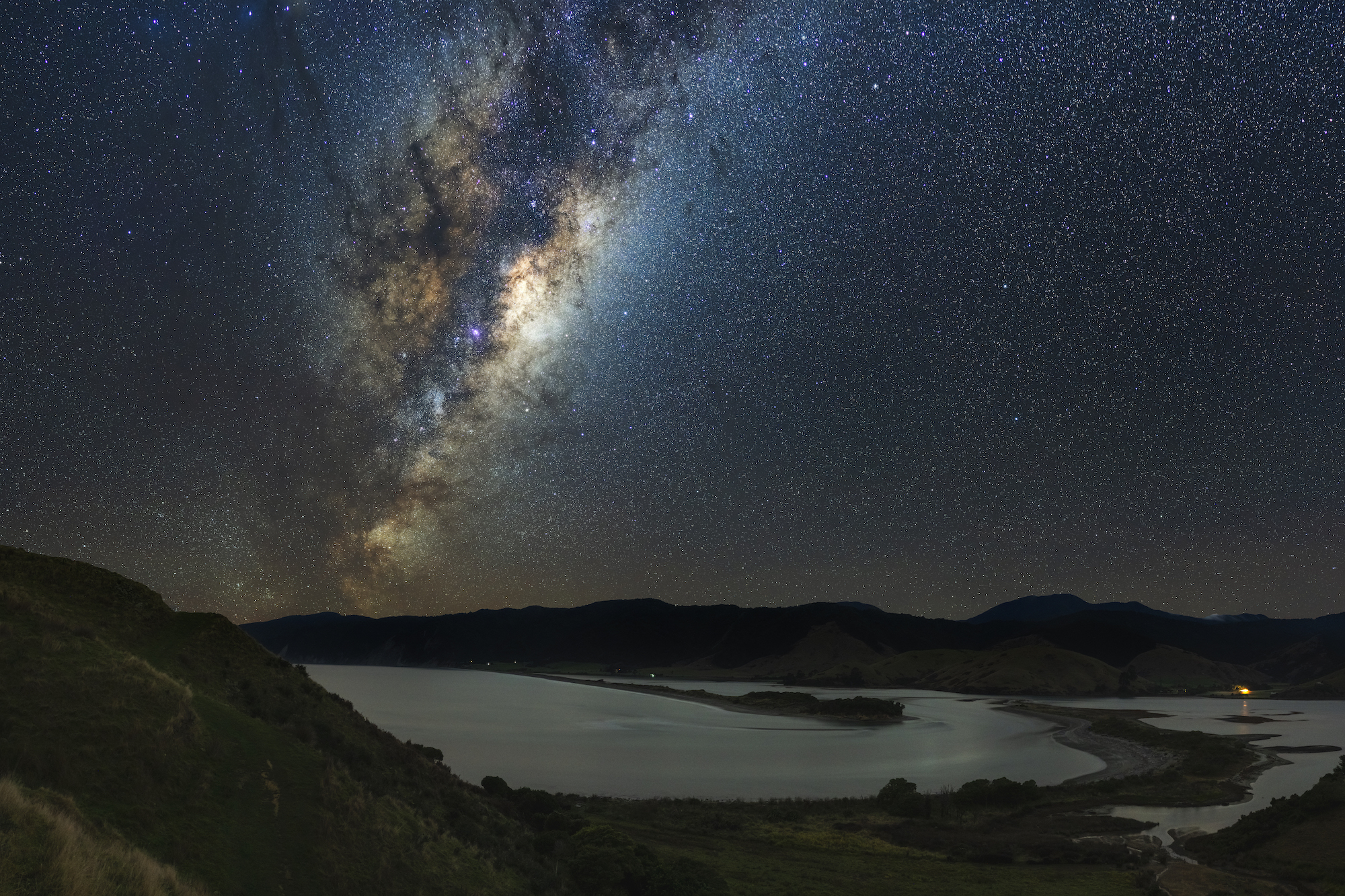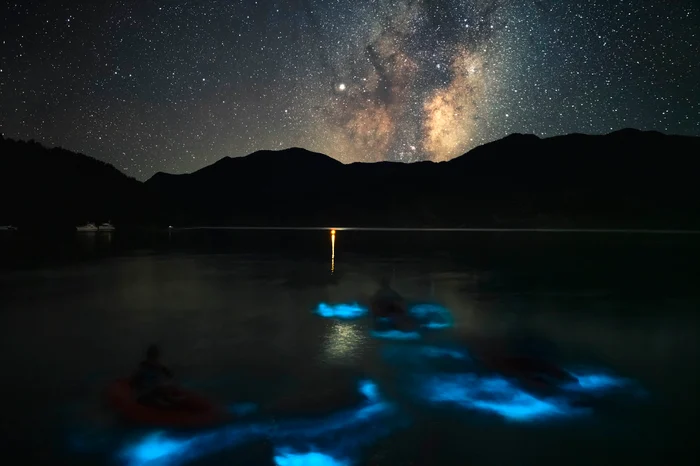Night visions

As New Zealand celebrates Matariki, Paula Hulburt discovers what makes Marlborough so special when it comes to stargazing and why the night skies here are so alluring.
Dawn is several hours away as stargazers point telescopes towards the inky black. Only the thunderous waves curling onto Rarangi beach break the silence as above the Milky Way dazzles.
It is a view virtually unchanged for millennia and one that must be preserved, say local astronomers. The clear winter nights are a welcome sight for stargazers across the region, a time of wonder as the clearer skies reveal more of their secrets than any other time of the year as the heavens dip closer towards the Earth.
For astronomer and Omaka Observatory Trust Chair Lee Harper, there is even more to look forward to this winter with a new observatory set to open on July 1 - an outdoor crater observatory in the Omaka Valley. While recent rain and Covid have slightly delayed the opening, originally set down for Matariki, the dream of a locally operated observatory is almost a reality. Helping generations to come to appreciate the dark skies on our doorstep is important, he says.

“In today’s world, the children of Marlborough ought to have access to a hands-on facility like this to get them excited about understanding our universe, about STEM (Science, Technology, Engineering and Maths) and their connection to it all.
“It seems a waste not to use our amazing, clear Marlborough skies to make that happen. “Being able to also showcase our region to visitors, encouraging over-night stays and partnering with local businesses to enhance our local economy, all whilst funding the education of our future generations is going to be even more of a bonus.”
The new observatory will block out light pollution as well as providing shelter from the wind. The Omaka Observatory Charity Trust want to make the new attraction accessible for all, explains Lee.
It will offer free access to the observatory for local school groups whilst also running a tourism star-gazing business to ensure the trust is fully self-sufficient.
Ensuring a wider understanding of the night sky is vitally important to the trustees, with their focus being on Māori astronomical knowledge; tātai arorangi. This is considered part of the body of knowledge known as kauwae-runga, containing the celestial knowledge, the knowledge of the creation, the gods, stars and time.
Marlborough man Ken Hippolite will be one of the Trust’s presenters, a mantle he is proud to take on, offering an insight he is rightly proud to pass onto the current generation.
“As a descendant of Ngati Koata of Durville Island, and Ngai Tahu – with close connections to Ngati Rarua, Te Atiawa, Rangitane and Ngati Kuia, I look forward to being a part of this venture.
“I have always had an interest in the planets, stars and galaxies since a very young age. I also recall some of the lore I heard from my Grandma and Grandpa about Tātai Aorarangi which I will be proud to pass onto the current generation.”
Early Māori astronomical knowledge allowed navigation of the oceans, planting of crops, and the harvest of kaimoana (seafood). As Marlburians joined thousands of people across the country to mark Matariki last month, the frosty start and clear skies offered a wonderful view as dawn broke.
Winter in New Zealand signals the beginning of Matariki, the Māori New Year and the rising of the seven sisters, or the Pleiades. During the months of June and July, the Matariki star cluster reappears above the horizon, ushering in a new year according to the Māori lunar calendar.
While navigators followed these stars to guide them across the Pacific centuries ago, the cluster are relatively new in terms of stars, explains Nelson Astronomical Society secretary Dennis Goodman.
He believes Marlborough offers some of the most pristine views in the Top of The South. Rarangi and Seddon in Marlborough are ideal viewing spots, he says.
“The Seven Sisters are significant as in stellar term they’re very young, so young that if you take photos, you can see remnants of the dust cloud where the stars were formed.”
Wherever he is in the country, Dennis keeps a keen eye on the night skies. “Sometimes I just go out at night and stand on my doorstep and have a look at what’s up there."
“The northern hemisphere don’t see it like we do, we get unique views that are really special.” To help make the most of these unique views, three different sized traditional telescopes will be used at the observatory, situated about 14km from Blenheim.
Other equipment will let guests capture their own photos using their smartphones.
It will make the experience a unique one, Lee explains. “Our equipment includes a range of 14”, 9” and 6” telescopes which are prefect for observing in detail the planets in our solar system, distant nebula, galaxies and star clusters as well as the craters on the moon.
“As well as operating from the Observatory the trust will offer mobile pop-up tours around the region and will be working with dining partners and other venues in the region to provide mobile astronomy tours.
“As well as accessing all our facilities school groups will also use our classroom which includes full immersion virtual reality equipment so students can have a virtual tour of the International Space Station as well as learning about space phenomena such as black holes, binary stars and comets.”
So, what is it about the night sky that fascinates us so much? For renowned Top of the South Astro photographer Jack Burden, it’s a sense of connection.

“I feel like it might be because you can look up and see the same stars that your ancestors saw once upon a time.
“We have certainly lost our connection with the stars for the most part. In Maori culture, the stars play an important role, in the past being used for navigation as well as an indicator of when to hunt certain species and many other uses. It is a shame, but I think with more emphasis being placed on Matariki, we can all use it as a chance to learn more about the heavens above.”

The Omaka Observatory Charity Trust is keen to hear from any local astronomy enthusiasts who would be interesting in getting involved with the setting up of the Observatory or becoming an Astro-tour guide.
The trust would like to thank its current sponsors: Pelorus Trust, Mazda Foundation, Redwood Trust, Pub Charity Trust, Gascoigne Wicks Lawyers, pcMedia and Wallace Diack Chartered Accountants.
Andrea Oldham for use of her early concept design artwork and to TG Excavations for assistance with the earthworks and building the actual crater.
Visit omakaobservatory.co.nz for more details.
You can see more of Jack’s work at jackburdenimages.com or search jackburdenimages in Instagram or Facebook.
